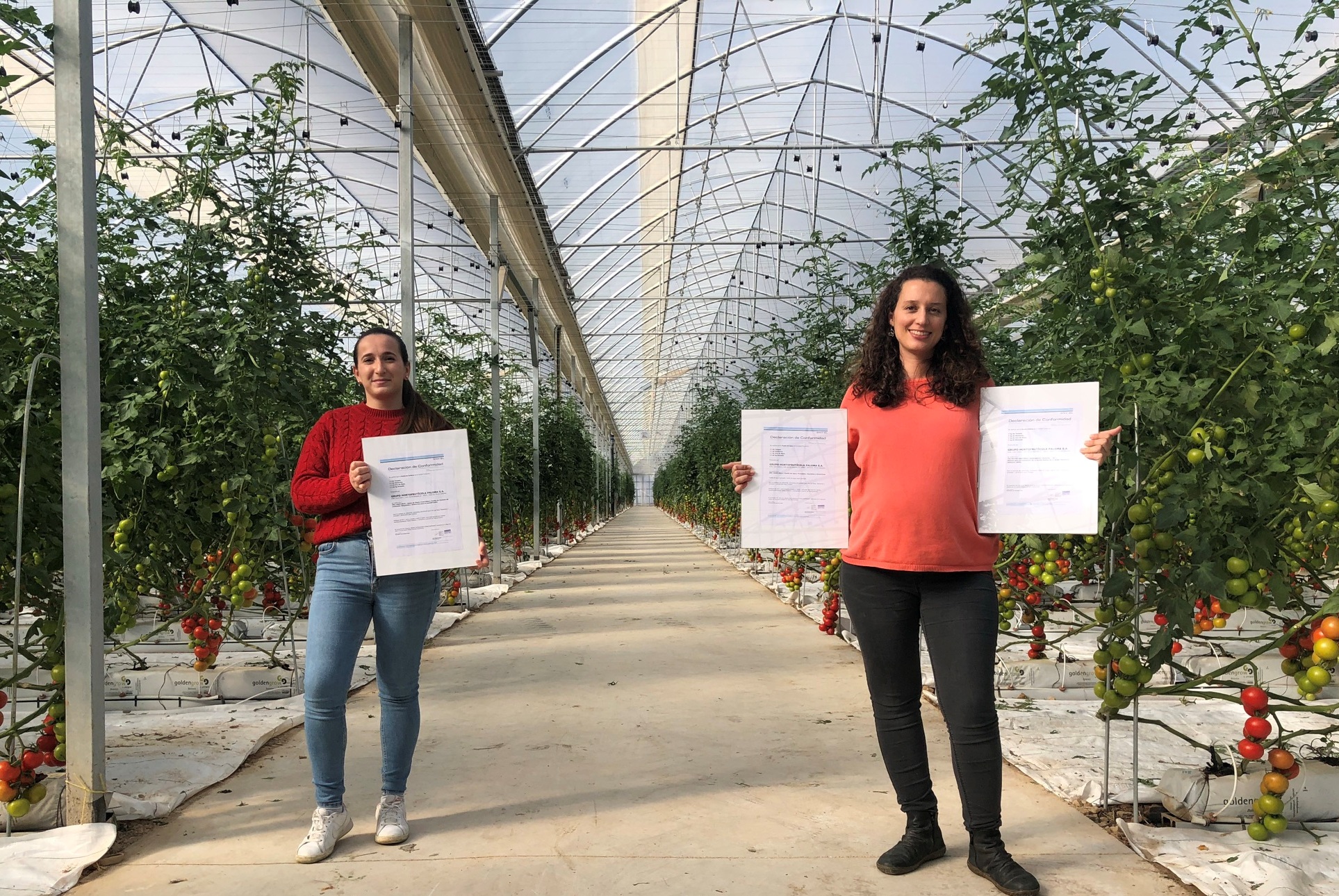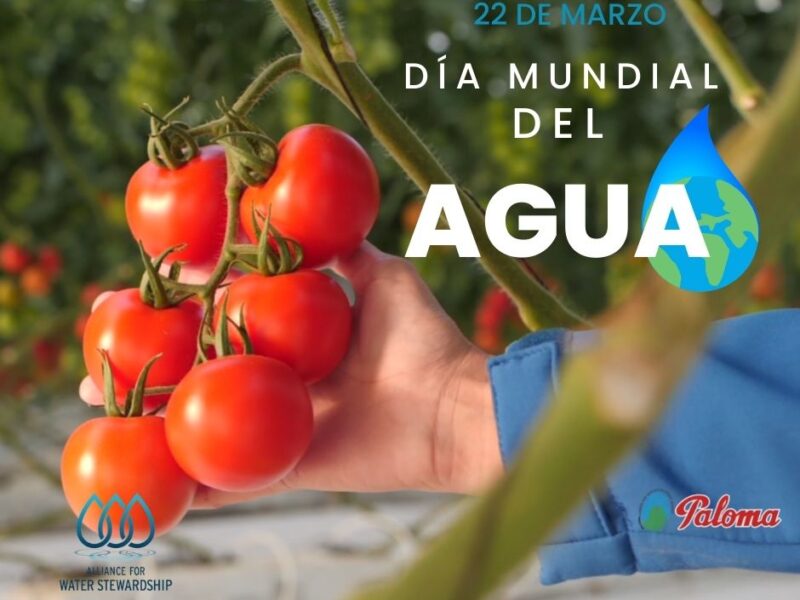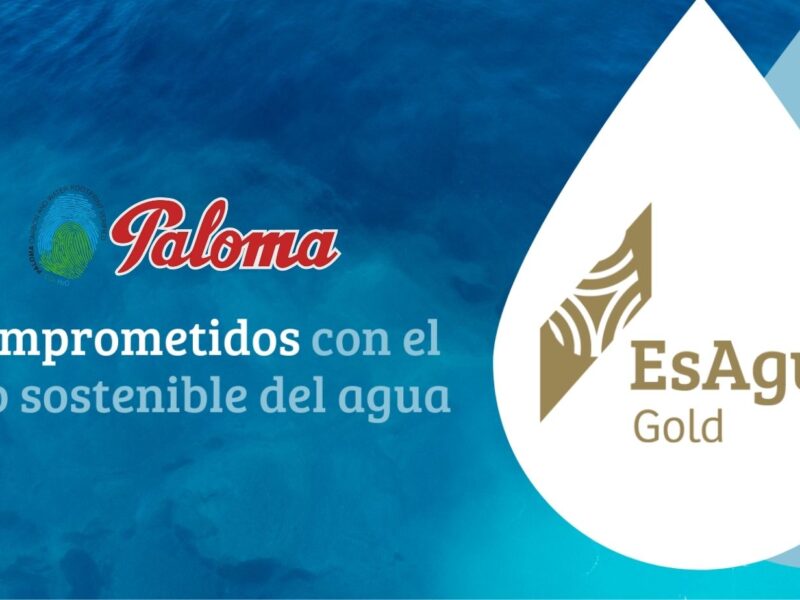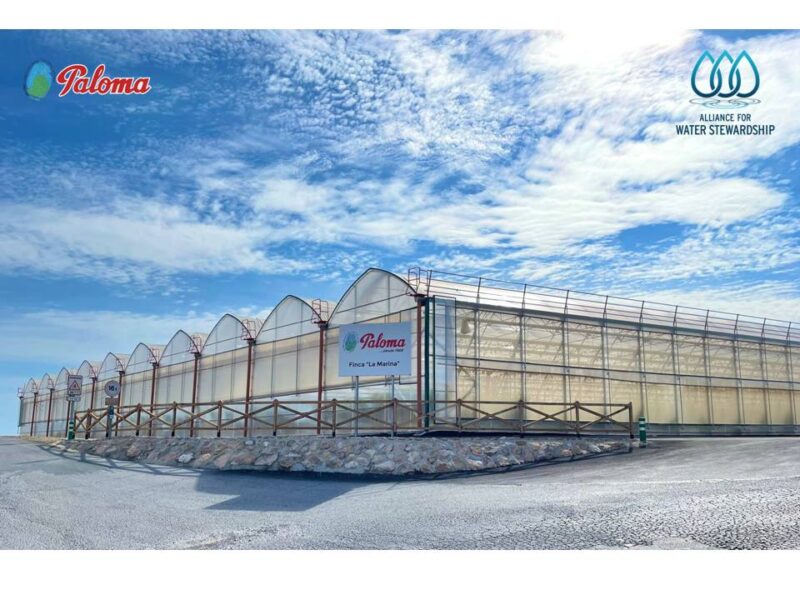
Water and Carbon Footprint
During the last edition of Fruit Attraction 2016, Grupo Paloma received the Water Footprint and Carbon Footprint certificates.
During the last edition of Fruit Attraction 2016, Grupo Paloma received the Water Footprint and Carbon Footprint certificates, obtained for all our crops. In this way we became the first Spanish company to obtain this verification for a hydroponic crop and for the growing of pomegranate.
Grupo Paloma continues its commitment to efficient agriculture by implementing new tools to evaluate and verify the sustainability of our crops.
The project has been developed using eFoodPrint software, under the analysis and validation of DNV GL – Business Assurance and framed within the Bayer’s Agro Services program.
Representatives of eFoodPrint, DNVL GL-Business Assurances, Bayer Agroservicios, as well as our Production and Marketing Directors and the Heads of the Technical and Quality Departments of Grupo Paloma were present at the certificate presentation ceremony.
The Regional Minister of Agriculture of the Region of Murcia, Adela Martínez-Cachá, was also interested in this project and wanted to join us and learn more about this pioneering verification at a national level.
In this first phase, the water and carbon footprint of some 110 hectares of agricultural production has been calculated, including hydroponic tomato, table grape, nectarine and pomegranate crops in farms located in the towns of Águilas and Mazarrón. The company’s objective is to extend this study year after year until it includes the company’s total surface area.
ABOUT THE WATER FOOTPRINT
The water footprint is an essential indicator in calculating the sustainability of human use of natural resources. Thus, the water footprint of a product is defined as the volume of water consumed for its production, both directly and indirectly.
In order to preserve the environment without affecting the economics of the agricultural sector, a more efficient allocation of water resources is needed. In this sense, water footprint analysis facilitates an efficient allocation of water and investments, providing a transparent framework for the information and optimization of water policy decisions.
The water footprint can be expressed according to the type of water considered, broken down by color:
– Green Water Footprint: related to rainwater incorporated into the product. It makes full sense for agricultural products.
– Blue Water Footprint: related to the consumptive use of freshwater (surface or groundwater) evaporated, incorporated in the product, returned to another basin or returned in a period other than that of extraction. For agricultural products, it is associated with the need for irrigation of crops.
– Gray Water Footprint: related to water quality and its possible contamination due to discharges in a given process. It is a measure of the decrease in the capacity of rivers or lakes to assimilate pollutants.
COMMITMENT TO SUSTAINABILITY
This project shows the commitment of awareness in the optimization of resources of Grupo Hortofrutícola Paloma, especially water resources, so scarce and valued in the Region of Murcia. The calculation of both the Water Footprint and Carbon Footprint, will allow us to take actions to reduce these footprints and set targets for reducing them within our policy of continuous improvement.
This initiative continues to demonstrate that Grupo Paloma is a company committed to research, innovation and also to the environment and sustainability. Thus, among its many guidelines for the protection and conservation of the environment and natural resources, the reduction of its water and carbon footprint is now part of the company’s strategy to reduce its environmental impact.
Source: www.gpaloma.com





